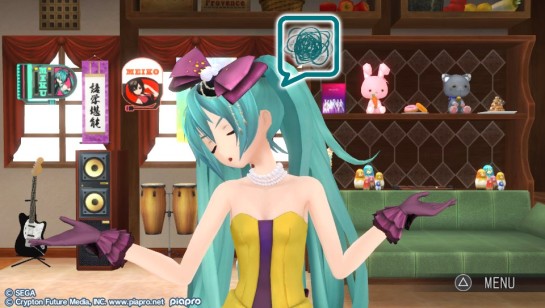Best Action game

God Eater 2 Rage Burst (PSVita/PS4)
Without a natural leader like Bloodborne last year, hard to choose between the three great ones today. But God Eater 2 Rage Burst somewhat stands out, because of its memorables momenta and heated battles. Full of adorable characters and playable in coop, it goes well beyond the hunting genre to become a great saga.
Runner-up : Fate Extella (PSVita) & The Division (PS4)
Best Shooter

Battlefield 1 (PS4)
In Spring, I would have bet anything on Overwatch for this title. But that was underestimating DICE’s efforts to make Battlefield not only innovating by its theme, World War I, but also a thrilling sniper experience thanks to the best TDM maps since I know the series. The remarkable atmosphere and the gorgeous graphics are just the cherry on the cake.
Runner-up : Overwatch (PS4)
Best Strategy game

Kan Colle kai (PSVita)
Kan Colle kai is the new Advance Wars. The addictive management of units and the desperate defense of positions brought me tears of joy when the final trophy popped. Gifted with rich and unique design and having a game system as enjoyable as Pokemon plus outstanding challenge, Kadokawa’s game is one to remember.
Runner-up : Pokemon Sun&Moon (3DS)
Best RPG

Persona 5 (PS4)
Persona 5 being my first «true» Persona game (after Persona 4 Dancing All Night last year), I hadn’t how massive this series was. And here it is, the hype is 170% deserved, because Persona 5 is an RPG like you seldom see. Great narrative & characters, fantastic combat, dream-like design, deep game system, overflowing content… the new King of JRPG is here!
Runner-up : Tokyo Xanadu (PSVita)
Best puzzle game

Rose and the Old Castle of Twilight (PSVita)
After a superb Yomawari, Nippon Ichi Software is at it again with Rose and the Old Castle of Twilight. Not adventure this time but pure a 2D platformer featuring lots of puzzles for hours of intense brainstorming, with far better controls than The Firefly Diary.
Runner-up : Ace Attorney 6 (3DS)
Best Sountrack

Hatsune Miku Project DIVA Future Tone (PS4)
The tracklist in Hatsune Miku Project Diva Future Tone speaks for itself : in the 228 tracks, you’ll surely find dozens of your liking. Every J-pop style is widely represented, with a lot of novelties compared to portable Project Diva games (Hôkai Utahime, Gothic and Loneliness). Yet this PS4 game also features classics like Remocon or Envy Cat Walk.
Runner-up : Hatsune Miku Project Diva X (PSVita/PS4)
Best graphics

The Division (PS4)
Open world of impressive scale, The Division is visually the most striking game I’ve seen this year. Ubisoft re-created New York with great realism and the post apocalyptic touch makes it an immersive experience.
Runner-up : Battlefield 1 (PS4) & Hatsune Mike Project Diva X (PSVita)
Best innovation

Overwatch (PS4)
When Blizzard does something, it rarely fails. Overwatch is a competitive FPS like you’ve never seen before. Close to an RPG by its characters and skill mechanics, it allows for a great variety of gameplay blowing everything else in the genre. You’ve got an innovative set of roles like defenders (D.Va) or support characters of which the recently added grandma Ana is a stunning example.
Runner-up : Mary Skelter Nightmares (PSVita)
Best narrative

Persona 5 (PS4)
Persona 5 is the master of suspense and intrigue. The passion in those personal destinies, the will of the characters, the bond uniting them, all this conjugated with the onimous plot set by wicked elites is a delicious cocktail that you keep pouring during dozens of hours.
Runner-up : Tokyo Xanadu (PSVita)
Best atmosphere

Rose and the Old Castle of Twilight (PSVita)
Nippon Ichi Software is at its best when creating dark and crooked universes. Rose and the Old Castle of Twilight is no expection and delivers gloomy art that chills the bone : blood, death and despair are the key elements here. The developments, the very logic of the game and the touching conclusion make it emotionally beautiful.
Runner-up : Battlefield 1 (PS4)
Best design

Kan Colle kai (PSVita)
While Persona 5 sure blows things out in terms of design, I might stick to Kan Colle kai for this one. Really unique concept with risqué fan service included, Kantai Collection does a great job drawing friends and foes, and decorating your HQ is a lot of fun too.
Runner up : Persona 5 (PS4), Mary Skelter Nightmares (PSVita) & Pokemon Sun/Moon (3DS)
Best game you might never play

Kan Colle kai (PSVita)
I’m actually pretty sure you won’t play Kan Colle kai, unfortunately. Kadokawa has already announced that the game would be pulled back from shelves, further evidence that relations with the IP owner DMM.com aren’t exactly easy. You still have a few weeks to order an import version and a fat kanji dictionary with it.
Runner-up : none
Most disappointing

Sword Art Online Hollow Realization (PSVita/PS4)
You’d need to be really incompetent or seriously cynical to keep this unwanted «title». Mr. Futami Producer of Sword Art Online games, must be this kind of guy. Incapable of keeping the progresses made in Sword Art Online Lost Song, he’s badly rehashed Sword Art Online Hollow Fragment with Sword Art Online Hollow Realization : romoved playable characters, boring linearity, thin storyline, outdated engine… everything indicates he wanted to maximize profits by minimizing efforts. This logic seems actually be going on with Sword Art Online vs Accel World, the first screens of which are horrendous. This time, my money will go the more capable and ambitious developers.
Runner-up : Summon Night 6
 Game of the Year
Game of the Year

Persona 5 (PS4)
 Kan Colle kai (PSVita)
Kan Colle kai (PSVita)
 Rose and the Old Castle of Twillight (PSVita)
Rose and the Old Castle of Twillight (PSVita)
 Tokyo Xanadu (PSVita)
Tokyo Xanadu (PSVita)































